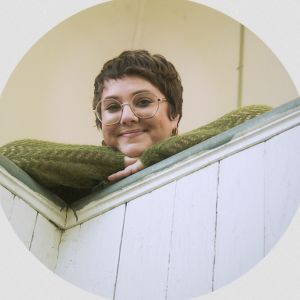Acknowledging and Mitigating Feelings of Social Isolation

Starting in March 2020, people across the globe have been asked to stay away from one another. How do we deal with the feelings of loneliness that isolation brings on?
“Social distancing” is a term that many of us had not heard last year, nor even at the beginning of 2020. Now, as we find ourselves months into a global pandemic, it’s on the top of our minds. For now, health experts agree that staying away from people, be it in large gatherings or smaller indoor exchanges of ideas and conversation, is the best way to stay safe.
Although social distancing may protect our physical safety, our mental health and safety also need to be considered. It is natural to feel isolated and lonely during periods of time when you are not otherwise able to be engaged in in-person interactions with others. By acknowledging those feelings, sitting with them, and taking actionable steps to address them, you may be able to mitigate their effects.
Reaching out
It can be helpful to identify for yourself who the people you used to be in touch with frequently, whether in person or not, are, and keep your communications with them regular. This could mean sending texts, making phone calls, doing video chats, or if possible, meeting for an outdoor face-to-face visit, while keeping your distance.
For some personality types, there is an instinct to retreat during this period of isolation, but talking to people you know and care about will bring some normalcy back into the rhythm of your days and will help to offset feelings of isolation.
Turning inward
In addition to reaching out, for some people, this period of time may provide a good opportunity to turn inward and think about the things that really matter to you or are important to your life. For some, this may be a good time to start keeping a journal, which can bring serenity to the process of sorting through one’s thoughts.
Starting a journaling practice can be as simple as setting aside a particular amount of time each day to reflect in writing. This can be as short as a few minutes or as long as you’d like — the important thing is that you do it regularly, even when you feel like you don’t want to. In time, the practice of journaling will become a companion in itself.
Mindfulness practice
Learning to practice mindfulness has the benefit of allowing one to see thoughts and emotions for what they are: temporary, fleeting conditions. Feelings of isolation, loneliness, and anxiety are no different. Mindfulness practice trains the mind to be able to take solace in the notion that such feelings are external to the self and are temporary.
Starting a mindfulness practice means getting in touch with meditation or mindfulness resources and guides. Be patient with yourself — don’t expect yourself to immediately be an expert at mindfulness. Show up regularly for your practice and learn to sit with it. We’ve already talked about mindfulness for beginners on the blog, and it has helped us and our users so much, we also built a dedicated guide to mindfulness journaling to help you get started.
Forming a pod
As the pandemic period has stretched on in months, some people have formed “pandemic pods” — groups of people with whom they share social distancing practices with whom they feel they can socialize with safely. For example, if two people are strictly staying isolated other than seeing one another, those two people can feel fairly confident that the risk in seeing one another is fairly low. Some families have also started to do this in order to allow their children to see their peers while school is closed.
Leaving the house, safely
Though for many people the idea of social isolation means, well, isolating, it is possible in some regions to leave the home without coming into contact with others and without enhancing the risks of contracting the virus too much. For example, a walk in the neighborhood or a park is considered a relatively safe activity to engage in. Going for a drive may also help break up feelings of isolation and mundanity, and so long as you don’t leave your car, you’re never even coming into contact with potential germ hazards.
While big sweeping gestures toward connection to the world may not be possible — think, world travel, for example — we can bring ourselves out of our shells in smaller ways. If we do so with intention, it can create benefits for our minds and souls that we may not have otherwise discovered had we stayed shut indoors.
Though this period of time is proving challenging for people in a host of ways, many of which were unpredictable at the onset of it, with some intentionality and mindfulness toward our condition, we can help mitigate feelings of isolation and loneliness for ourselves. It’s our hope that some of the methods above will help bring you some peace in this challenging time, that you will prosper socially and emotionally, and that you will remain healthy, both physically and mentally.
